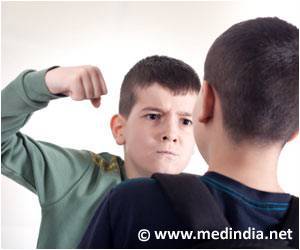In 2011, almost 13% of high school students had been victimized with weapons.
Weapon-related violence among adolescents can lead to injuries and long-term mental health problems. In 2011, almost 13% of high school students had been victimized with weapons. In a new study that will be published in
The Journal of Pediatrics, researchers found that the risk and protective factors for carrying and using weapons vary by race and gender.
Dr. Rashmi Shetgiri from Los Angeles Biomedical Research Institute and researchers from University of Texas at Dallas, Southwestern Medical Center, and Johns Hopkins Children's Center used longitudinal data from a national survey conducted during the mid-1990s, when rates of violent crime had been in decline. A subset of students in grades 7-12 were surveyed about weapon involvement in two waves, approximately one year apart. Dr. Shetgiri said, "We used the data to identify risk and protective factors for involvement with weapons in the past year, which we defined as carrying a weapon, pulling a gun or knife on someone, or shooting or stabbing someone."
TOP INSIGHT
13% of African American, 10% of Latino, and 7% of white students were involved with weapons. It also was found that boys were two to four times more likely than girls to be involved with weapons.
The researchers found that 13% of African American, 10% of Latino, and 7% of white students were involved with weapons. Of those who carried weapons, 17% also had shot or stabbed someone in the previous 12 months. Compared with those who reported no weapon involvement, adolescents who initially reported involvement with weapons were four to six times more likely to be involved with weapons a year later. It also was found that boys were two to four times more likely than girls to be involved with weapons.
Although there are differences among racial/ethnic groups in specific risk and protective factors for weapon carrying and use, reducing emotional distress, exposure to violence, and alcohol and drug use may decrease the risk of weapon involvement for all adolescents. Dr. Shetgiri said, "It is important to also promote educational aspirations, minimize the influence of delinquent peer groups, and focus on family connectedness to appropriately tailor programs for different racial/ethnic groups."
Source-Eurekalert

 MEDINDIA
MEDINDIA



 Email
Email





